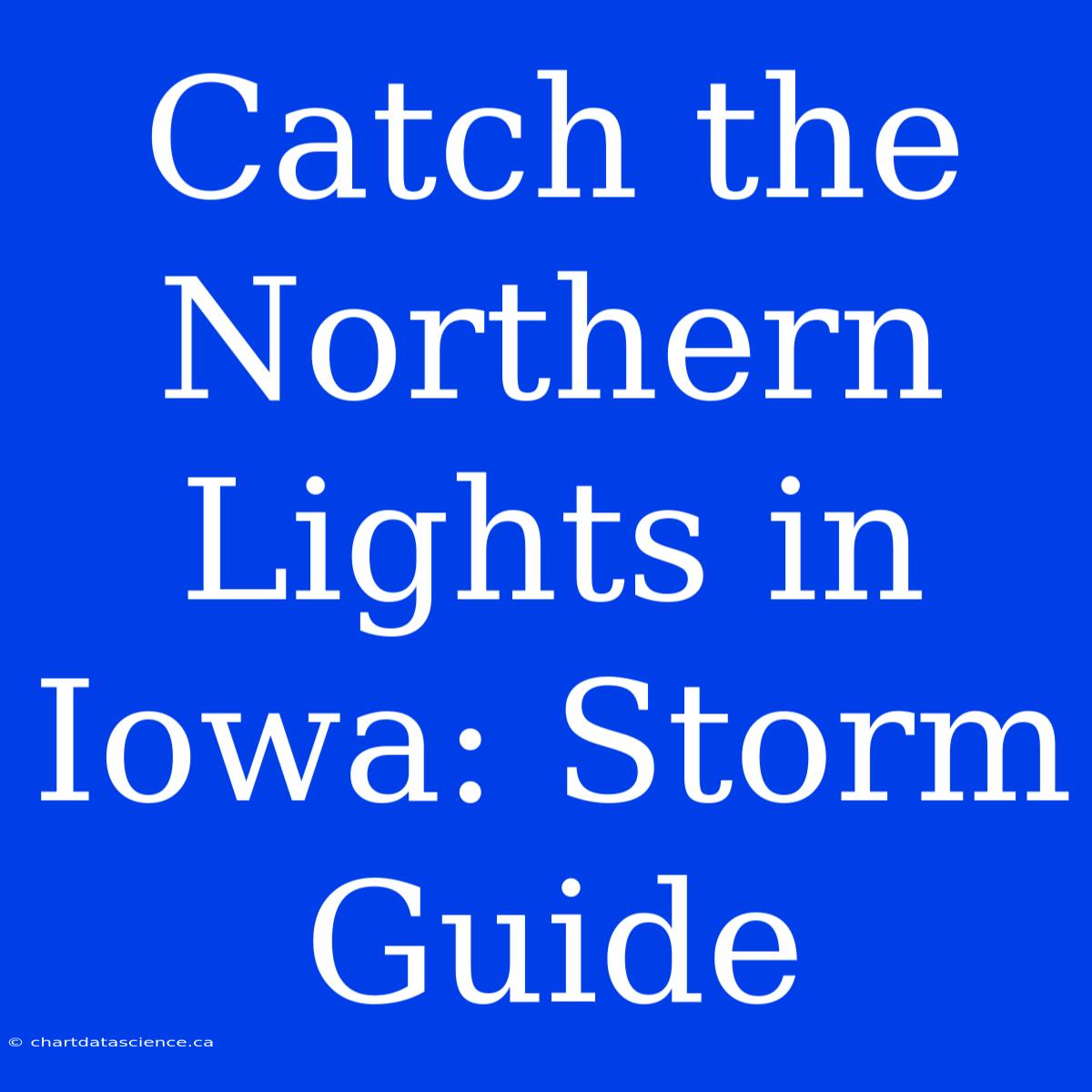Catch the Northern Lights in Iowa: Storm Guide
Dreaming of witnessing the ethereal beauty of the Northern Lights, but think it's impossible in Iowa? Think again! While Iowa isn't known for its aurora borealis displays, there are times when these celestial marvels can grace the skies even in the heartland.
Understanding the Science Behind the Show:
The Northern Lights, also known as the Aurora Borealis, are caused by charged particles from the sun interacting with Earth's atmosphere. These particles, carried by solar winds, travel towards Earth, and when they collide with gases in the atmosphere, they release energy in the form of light. The intensity and visibility of the aurora borealis are influenced by several factors, including solar activity, geomagnetic storms, and cloud cover.
Iowa's Aurora Potential:
While Iowa sits relatively far south from the auroral oval (the region where the Northern Lights are typically strongest), geomagnetic storms can sometimes push the auroral activity further south, making it visible in Iowa. This is why it's crucial to stay updated on solar activity and geomagnetic storms.
Here's your guide to catching the Northern Lights in Iowa:
1. Track Solar Activity:
Keep an eye on the Space Weather Prediction Center (SWPC) website. This website provides information about current solar activity, including Kp index, which measures the intensity of geomagnetic storms. Aim for a Kp index of 5 or higher for a chance of auroral displays in Iowa.
2. Check Aurora Forecasts:
Websites like Aurora Alerts, Spaceweatherlive, and Aurora Forecast provide real-time aurora forecasts, including the probability of auroral activity in various locations, including Iowa.
3. Pick a Dark Location:
Light pollution can hinder your chances of seeing the Northern Lights, so find a location far away from city lights. Head to state parks, rural areas, or open fields to maximize your viewing experience.
4. Be Patient:
The aurora borealis can be unpredictable, and it may take some patience to catch a glimpse. Even when conditions are favorable, the lights might be faint or only appear for a short time. Dress warmly, bring a blanket, and be prepared for a long night.
5. The Best Time of Year:
While auroral activity can occur year-round, the best time to catch the Northern Lights in Iowa is during fall and winter, when the nights are long and dark.
Tips for Capturing the Magic:
- Use a DSLR camera with a wide-angle lens and a tripod for optimal results.
- Set your camera to a high ISO (800 or higher) and a long exposure time (10 seconds or more) to capture the faint auroral glow.
- Experiment with different settings to find the perfect combination for your location and lighting conditions.
Remember, the Northern Lights are a natural phenomenon, so there's no guarantee you'll see them. But with careful planning and a little luck, you might just witness this incredible spectacle right here in Iowa.
Keep an eye on the skies, and good luck!

